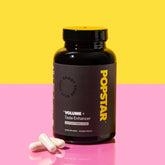Seminal ejaculation is a key component of male reproductive ejaculation and an important physiological process linked with male orgasm and ejaculation. Understanding how the ejaculation process works can help men recognize what is normal, identify potential concerns, and maintain healthy ejaculation throughout life.
Table of Contents
- What Is Seminal Ejaculation?
- Key Takeaways
- Overview of Male Ejaculation and Semen Release
- Quick Facts About Seminal Ejaculation
- How Ejaculatory Function Works
- Why Seminal Ejaculation Matters for Men’s Health
- Benefits of Healthy Ejaculation
- Risks and Concerns Related to Ejaculatory Function
- Consent, Communication, and Partner Discussions
- Ejaculation and Existing Medical or Psychological Conditions
- When to Seek Professional Help
- Myths vs Facts About Seminal Ejaculation
- Frequently Asked Questions About Seminal Ejaculation
- References and Further Reading
- Disclaimer
What Is Seminal Ejaculation?
Seminal ejaculation refers to the release of semen from the penis during sexual stimulation. It is a coordinated physiological event involving the prostate, seminal vesicles, vas deferens, and pelvic floor muscles.
In men’s sexual health, seminal ejaculation is closely linked to male orgasm and ejaculation, fertility, and overall ejaculatory function. It can be affected by physical, psychological, and relational factors.
Key Takeaways
- Seminal ejaculation is the release of semen from the penis through rhythmic muscular contractions.
- Male ejaculation is connected to sexual pleasure but is not synonymous with orgasm for every man.
- Healthy ejaculation varies widely in volume, timing, force, and sensation.
- Ejaculatory function can be influenced by stress, age, hormone levels, and medical conditions.
- Semen ejaculation is essential for natural fertility but not required for sexual satisfaction.
- Ejaculation issues are common and can usually be improved with medical or therapeutic support.
- Communication with partners helps reduce anxiety and improves sexual experiences.
- Men should seek help if they experience pain, sudden changes in semen release, or disruption in sexual function.
Overview of Male Ejaculation and Semen Release
Seminal ejaculation is both a reproductive and sexual response. It typically occurs at the peak of sexual arousal and involves the controlled release of semen containing sperm and fluid from reproductive glands.
Many men associate ejaculation with sexual performance and identity, which can create pressure, anxiety, or confusion when ejaculation changes over time. Understanding the physiology helps normalize these changes.
Quick Facts About Seminal Ejaculation
| Aspect | Summary |
|---|---|
| Definition | Release of semen through the urethra due to coordinated muscular contractions |
| Main organs involved | Prostate, seminal vesicles, vas deferens, urethra |
| Typical semen volume | Often around a teaspoon, but varies widely |
| Frequency | Naturally varies by age, libido, and health |
| Fertility relevance | Semen carries sperm necessary for conception |
| Common concerns | Premature ejaculation, delayed ejaculation, low volume |
How Ejaculatory Function Works
Seminal ejaculation occurs in two main phases: emission and expulsion.
Emission Phase
- Seminal fluid pools in the urethral bulb.
- The prostate and seminal vesicles contract, pushing fluid forward.
- Men often feel a sensation of inevitability during this phase.
Expulsion Phase
- Pelvic floor muscles contract rhythmically.
- Semen is released through the penis in pulses.
- This phase often coincides with orgasm, though the two processes are distinct.
Why Seminal Ejaculation Matters for Men’s Health
Healthy ejaculation plays roles in reproductive function, sexual satisfaction, psychological confidence, and relationship wellbeing.
Physical Health
- Semen release helps maintain prostate function.
- Ejaculatory changes can signal hormonal or medical conditions.
Mental Health
- Ejaculatory dysfunction often contributes to anxiety or relationship stress.
Relationship Dynamics
- Partners may interpret ejaculation-related difficulties incorrectly, so open communication is essential.
Benefits of Healthy Ejaculation
Many men report positive emotional and physical effects when their ejaculation process feels reliable and comfortable.
Benefits may include:
- Reduced pelvic tension
- Improved sexual confidence
- Enhanced intimacy with partners
- Support for natural fertility when desired
Risks and Concerns Related to Ejaculatory Function
Seminal ejaculation itself is typically safe, but issues can arise.
Common Mild Concerns
- Occasional delayed semen release
- Changes in semen volume
- Variability in force of ejaculation
More Serious Concerns
- Painful ejaculation
- Blood in semen
- Sudden inability to ejaculate
- Premature or delayed ejaculation that causes distress
Risk Reduction Table
| Risk | How to Reduce It |
|---|---|
| Pain during ejaculation | Seek medical evaluation; reduce stress; review medications |
| Ejaculation anxiety | Practice communication, consider therapy |
| Fertility concerns | Semen analysis and medical consultation |
Consent, Communication, and Partner Discussions
Talking openly about ejaculation can reduce pressure and build trust.
Guidelines for communication:
- Use simple, clear language without blame.
- Focus on comfort, not performance.
- Share concerns early rather than waiting until frustration builds.
Ejaculation and Existing Medical or Psychological Conditions
Ejaculatory function can be affected by physical and mental health factors.
Conditions That May Influence Ejaculation
- Diabetes
- Neurological disorders
- Prostate conditions
- Depression or anxiety
- Medication side effects
How Professionals Help
- Urologists assess physical factors.
- Therapists address psychological influences.
When to Seek Professional Help
Men should seek help when ejaculation issues cause distress or appear suddenly.
Examples:
- Pain or burning during ejaculation
- Complete inability to ejaculate
- Ongoing premature or delayed ejaculation
- Concerns about fertility
Myths vs Facts About Seminal Ejaculation
| Myth | Fact |
|---|---|
| Ejaculation volume reflects masculinity | Volume varies widely and does not define health or masculinity |
| All men ejaculate the same way | Ejaculatory patterns differ significantly among individuals |
| Ejaculation equals orgasm | Men can experience orgasm without ejaculation |
Frequently Asked Questions About Seminal Ejaculation
What does seminal ejaculation mean in men’s sexual health?
Seminal ejaculation refers to the release of semen from the penis during sexual stimulation. It plays roles in fertility, pleasure, and prostate function.
Is seminal ejaculation normal for most men?
Yes, most men experience ejaculation during sexual stimulation, though patterns vary.
Can ejaculation affect sexual performance?
Ejaculation is related to sexual satisfaction but does not define sexual performance.
What causes changes in semen volume?
Hydration, frequency, age, and hormone levels all influence semen volume.
Is painful ejaculation a sign of a medical issue?
Pain is not typical and should be evaluated by a healthcare provider.
Can stress affect ejaculation?
Stress can disrupt hormonal balance and delay or hasten ejaculation.
What if my ejaculation happens too quickly?
Premature ejaculation is common and treatable through behavioral or medical approaches.
Can ejaculation problems be linked to erectile dysfunction?
Yes, ED and ejaculatory issues often overlap due to shared physiological pathways.
Is delayed ejaculation harmful?
Not usually, but it can cause stress or frustration.
How can I talk to my partner about ejaculation concerns?
Use calm, nonjudgmental language and focus on mutual comfort.
Can ejaculation occur without orgasm?
Yes, particularly in cases of nerve damage or certain medications.
Does frequent ejaculation improve prostate health?
Some research suggests regular ejaculation may support prostate function.
Can medications affect semen release?
Yes, antidepressants, antihypertensives, and others may influence ejaculation.
Does age change how men ejaculate?
Yes, older men often experience changes in force, volume, or timing.
Should I worry if semen looks different than usual?
Minor changes are common; sudden or severe changes warrant evaluation.
Can ejaculation issues be temporary?
Yes, especially when linked to stress, fatigue, or emotional strain.
What if I cannot ejaculate at all?
This may indicate an underlying issue and should be medically evaluated.
Can lifestyle changes improve ejaculatory function?
Better sleep, exercise, and stress reduction often help.
Is semen release required for sexual pleasure?
No, many men experience pleasure and satisfaction without ejaculation.
References and Further Reading
- National health organizations' resources on male sexual health
- Urology associations discussing ejaculation physiology
- Sexual health nonprofits providing educational materials
- Peer-reviewed medical and psychology research on ejaculatory function
- Fertility resources explaining semen quality and reproductive health
Disclaimer
This article is for informational and educational purposes only and does not constitute medical or mental health advice. Consult a qualified healthcare provider for personalized guidance.




















































